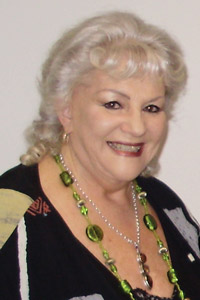In 2006, with outstanding cooperation from Department of Corrective Services staff at Cessnock Correctional Centre, two Justice Health staff made a huge step in walking together in the constant fight for Aboriginal health. In a mere six and a half hours, 88 Aboriginal offenders — 100% of the Aboriginal population in that centre — were screened for markers of kidney disease.
A well-meaning officer jokingly said to me on hearing about it, “How many you wanting to do?”
“Sixty-six, officer — the lot”, I answered.
That was how this story started.
Next we needed to give the patients-to-be an incentive.
Change — stalled a decade ago — is slowly starting to happen again. Twenty per cent of the male client base and 31% of the female client base in NSW prisons are Aboriginal people, with levels as high as 50% in younger offenders. Despite the Royal Commission into Aboriginal Deaths in Custody1 20 years ago, which recommended that culturally appropriate medical care be provided to offenders, with access to Aboriginal Health Workers wherever possible, and despite what you read in annual reports since then, Justice Health 10 years ago adopted an unofficial policy of mainstreamed take-it-or-leave-it medical service to Aboriginal offenders. It is now slowly moving away from this stance by employing its own Aboriginal Health Workers as part of the health centre staffing profile, beginning with one of the newer facilities at Wellington in midwestern NSW.
[H]ow little can the hard-worked wife of a degraded Australian savage, who uses hardly any abstract words and cannot count above four, exert her self-consciousness, or reflect on the nature of her own existence? [quoting Büchner]
. . . At some future period . . . the civilised races of man will almost certainly exterminate and replace throughout the world the savage races.2
As Aborigines began to sicken physically and psychologically, they were hit by the full blight of an alien way of thinking. They were hit by the intolerance and uncomprehending barbarism of a people intent only on progress in material terms, a people who never comprehended there could be cathedrals of the spirit as well as of stone. Their view of Aborigines as the most miserable people on earth was seared into Aboriginal thinking because they now controlled the provisions that allowed blacks to continue to exist at all. Independence from them was not possible. White people’s devaluation of Aboriginal life, religion, culture, and personality caused the thinking about self and race that I believe is the key to modern Aboriginal thinking. As Robert Kantilla said, “Suffering is that the white people class them as the lowest person on earth”.
[T]hey have been patterned into that stereotype, and they do live it.3
Recovery and ongoing maintenance of your good health starts, first and foremost, with a free decision by you to take primary personal responsibility for it. Yes, you can do it, and yes, you are worth it.
You need education — information, strategies, and especially role models. Find them, and stick with the strength, or else . . .
- 1. Johnston E, Commissioner. Royal Commission into Aboriginal Deaths in Custody. http://www.austlii.edu.au/au/other/IndigLRes/rciadic (accessed Apr 2009).
- 2. Darwin CR. The descent of man. London: John Murray, 1871: 200-201.
- 3. Gilbert K. Living black: blacks talk to Kevin Gilbert. London: Penguin, 1977: 3.






I acknowledge the Aboriginal people of the Awabakal nation, the traditional owners of the land on which I work.